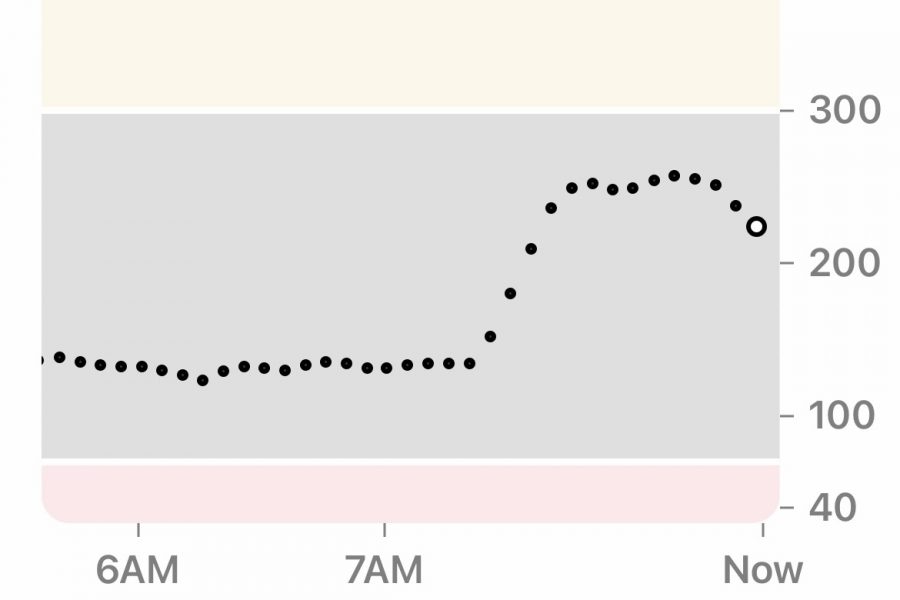Breaking the stigma of diabetes
PHOTO April Carr
November 12, 2021
The month of November is National Diabetes Awareness Month. Events such as walks and fundraisers take place to shed light on this life-long disease with the month bringing awareness to symptoms and what others should consciously look out for.
There are four types of diabetes: type 1 diabetes, type 2 diabetes, gestational diabetes and prediabetes.
According to the Juvenile Diabetes Research Foundation, type 1 diabetes is an autoimmune disease where the body attacks insulin producing cells. There is currently no cure, it is not preventable and most commonly affects juveniles but can occur in any person at any age.
Type 2 diabetes is most common in adults and it is where the body builds an insulin resistance. It is the most common type of diabetes and, unlike type 1, this form is preventable with a few lifestyle changes as reported by the Center for Disease Control and Prevention (CDC).
Prediabetes is normally the start of type 2 diabetes or an early sign of it, but as reported by the Mayo Clinic, prediabetes often has no symptoms.
Gestational diabetes is a form of diabetes that can develop in women while they are pregnant. The CDC reported that this is a result of the body not making enough insulin while pregnant.
According to the CDC, regardless of what type of diabetes someone may have, the most common signs to look out for are increase in thirst, frequent urination, weight loss without trying, blurry vision, fatigue, etc…
EverydayHealth and the American Diabetes Association state that 7.3 million people out are living with diabetes and have absolutely no idea.
Junior Adam Barcome has been living with type 1 diabetes for years.
“I was diagnosed when I was nine years old,” Barcome said. “My main symptom was thirst. I was very thirsty all the time and I was going to the bathroom about every 20 minutes. I remember drinking over 10 Gatorades and 10 bottles of water a day.”
Having diabetes comes with major life alterations and, if it is not taken care of properly, it can open a door to a whole new set of problems. It is vital to make sure blood sugar levels are staying in range (this can vary from each diabetic person). Though there is a list of things that can affect blood sugar levels, like stress, and hormones, food is a major one. However there is oftentimes a misconception about what diabetics can eat.
“One thing I wish everyone knew about type 1 diabetes is that people with the disease can eat anything they want and any serving they want of that food,” Barcome said. “They just need to take the correct amount of [insulin] to keep their blood sugar in check and to keep them safe.”
If blood sugar levels are not managed, it can potentially lead to other harmful health conditions. If someone is experiencing any symptoms of diabetes, consult with a doctor.












